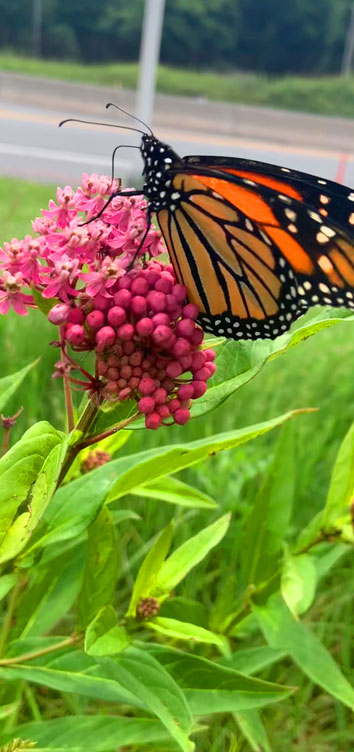
Property owners can help the pollinators too:
- Plant pollinator habitat and reduce the amount of monoculture grass in your yard.
- Include native milkweed plants in your landscape or other areas of your property.
- Select native plants from a local garden center that does not use neonicotinoids insecticides (the residue left on the plants can harm the pollinators).
- Reduce mowing and allow flowering vegetation, such as clover and dandelions, to be present in your grass.
- Consider pollinators during pesticide use:
- Wait until May or June to apply pesticides. Early-season pollinators and colonies of bees are still recovering from winter stress in March and April.
- The pesticides used outside your home to prevent grubs in your yard and bugs in your home can also kill pollinators – choose a pesticide targeted for specific species and areas of your yard.
- Use granular formulations of insecticides, which fall to the ground and avoid direct contamination of flowering portions of blooming plants.
Explore more information on pollinator habitat gardening:
- DCNR native plant suggestions
- Penn State Extension Pollinator Webinars
- Xerces Society tips to reduce pesticide use
- Pollinator Partnership for regional tips on bee friendly gardening
- Don’t have a yard? Organizations can volunteer to plant pollinator habitat in PennDOT’s rights-of-way through their Keystone Pollinator Habitat Program
- Find out the latest on Pennsylvania’s pollinator research and educational materials at Penn State
